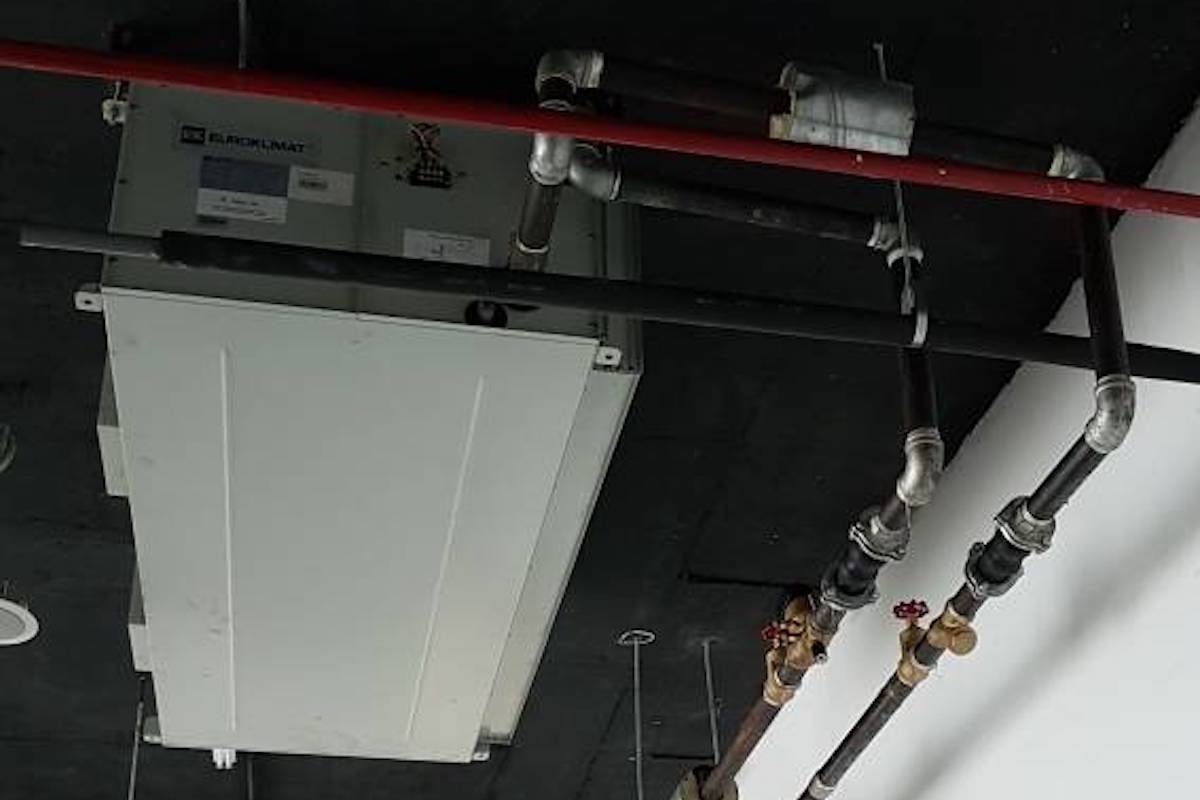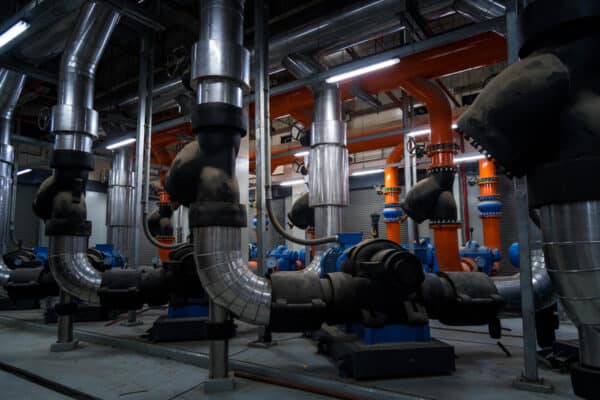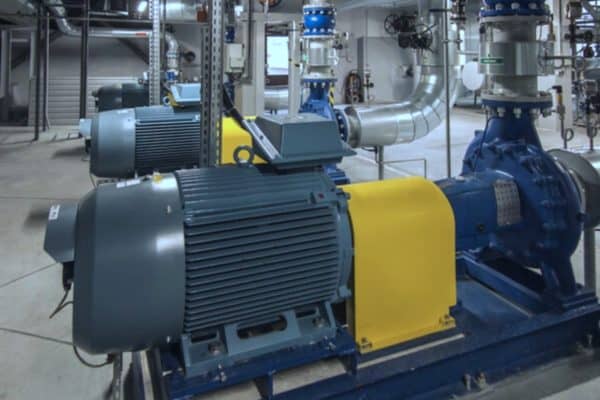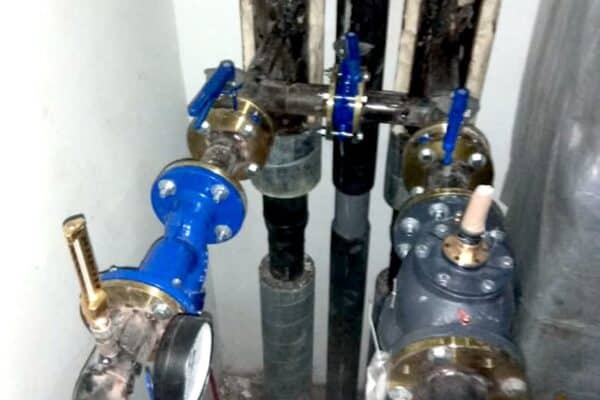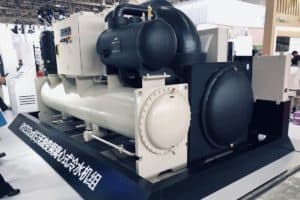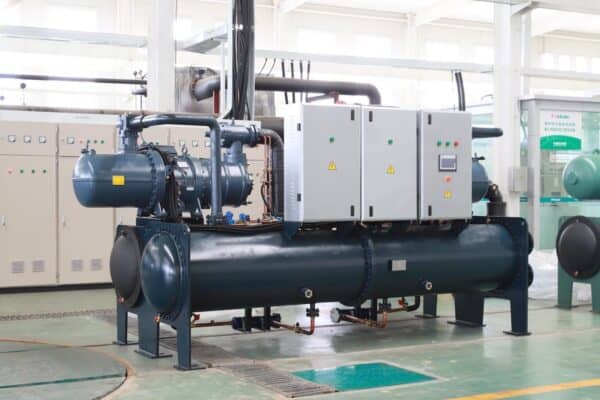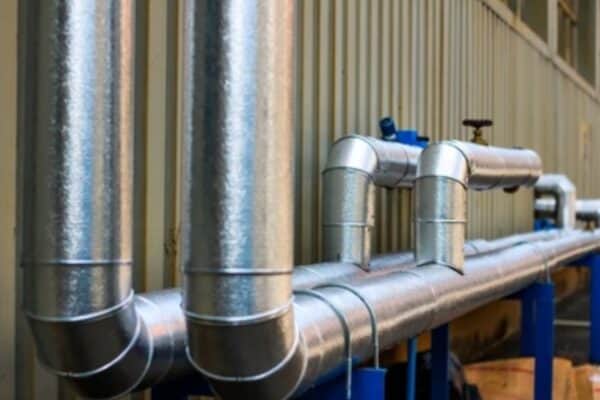What is a Chilled Water Fan Coil Unit?
A chilled water fan coil unit is one of the two kinds of fan coil units. It comes in different forms and types. So, many junior engineers are trying to understand chilled water fan coil units. Hence, I looked back at my previous projects and did some research.
Generally, a chilled water fan coil unit is a relatively smaller form of air conditioning unit that uses chilled water to transfer heat from indoor to outdoor. It controls its cooling capacity by regulating the amount of chilled water flowing inside its cooling coil.
Chilled water fan coil units may look simple than air handling units but if you worked on them in a construction project before, you’ll know that they are quite complicated too.
How Does Chilled Water Fan Coil Unit Works?
A chilled water fan coil unit works by circulating indoor air through its cooling coil thereby cooling the air and thus, cooling the room. It uses a thermostat to control an on/off valve. By controlling the on/off valve, it can control the chilled water flow thereby regulating its cooling power.
Unlike air handling units that often use a modulating valve, fan coil units usually use an on/off valve only. An on/off valve is only capable of fully-opened or fully-closed; it can’t stay in between.
In my previous blog post about the 4 common types of actuators in HVAC, I mentioned that a chilled water on/off valve is mostly made of a ball valve or globe valve and an on/off actuator.
A thermostat is used to control the on/off valve. When the room temperature rises above the temperature setpoint, the thermostat sends a signal to the on/off valve which the on/off valve opens fully to let the chilled water flow through the cooling coil of the chilled water fan coil unit.
When the room temperature drops below the temperature setpoint, the thermostat stops sending the signal to the on/off valve and thus, the on/off valve closes fully to stop the chilled water from flowing through the cooling coil of the chilled water fan coil unit.
Because chilled water fan coil units are generally small in their cooling capacity, using a modulating valve to control the chilled water flow rate does very little help in terms of temperature precision and energy efficiency.
However, a chilled water PIBCV on/off valve can also be used for chilled water fan coil units. Below is a typical chilled water fan coil unit piping diagram with a PIBCV on/off valve:

From the above diagram, the flexible joints are usually optional because some chilled water fan coil units are very small in physical size and capacity and thus, they don’t cause a significant vibration that needs flexible joints.
However, all chilled water fan coil units require a y-strainer, a control valve (a PIBCV or a basic on/off valve) and a pair of isolation valves. The y-strainer is used to prevent dirt such as sand from damaging the cooling coil while the isolation valves are used to isolate the unit during maintenance.
The bypass pipe and valve in the above diagram are very common and sort of like a basic requirement for all chilled water fan coil and air handling units. It is used for the flushing of the chilled water pipe prior to commissioning during the construction of the chilled water system of the building.
Nevertheless, the new type of chilled water pipe may not require the bypass.
Furthermore, the pressure and temperature gauge are very handy during and after the construction of the chilled water system. However, they are not mandatory accessories for the chilled water fan coil unit. In addition, a ceiling manhole must be allocated under the PIBCV valve, y-strainer and isolation valves for service access.
On a side note, if you want to quickly learn about chilled water system, you can get my Chilled Water System (eBook). If you’re into design, you can enroll in my Chilled Water System Design Course where I teach you various design procedures with tons of examples.
Chilled Water System Design Course
Learn how to design a chilled water system with AHU/FCU selection, chiller sizing, cooling tower sizing, pump sizing, piping design, ductwork design and more.
Types of Chilled Water Fan Coil Units
There are three common types of chilled water fan coil units; a) ceiling ducted, b) ceiling cassette and c) wall mounted. Ceiling ducted chilled water fan coil units are the most common type.
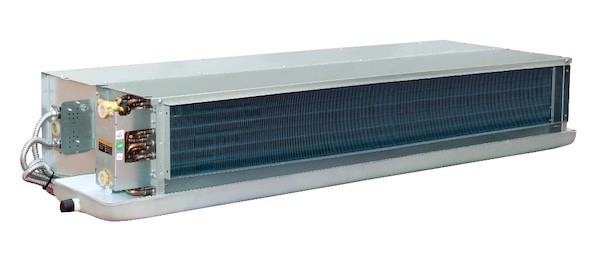
The most common type of chilled water fan coil unit (CHWFCU) is the ceiling ducted type. In a typical high-rise building, a 12,000 BTU (3.5kW) CHWFCU is often used for the lift lobby. Large CHWFCUs can go up to 50,000 BTU while the largest CHWFCU I’ve seen is about 365k BTU.
Most ceiling ducted CHWFCUs have 4 components; a) cooling coil, b) blower fan, c) air filter and d) return air plenum. Sometimes, the return air plenum is not required when the ceiling plenum box is used instead.

The ceiling cassette type of chilled water fan coil unit is also quite common in many chilled water systems. Ceiling cassette CHWFCUs look exactly the same as the ceiling cassette split air conditioners from the outside. They have a cooling coil, an air filter and a blower fan.
However, ceiling cassette CHWFCUs often don’t have as many functions as the ceiling cassette unit found in the split and VRF system. Most of the time, they only have on/off controls, temperature controls, air swing controls and fan speed controls.
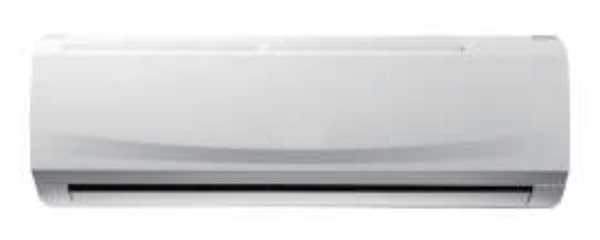
Wall mounted CHWFCU is relatively uncommon compared to the above two types of chilled water fan coil units. Similar to wall mounted units of the split system, the upper limit of the capacity of wall mounted CHWFCUs is around 24,000 BTU only.
Most people don’t prefer to use wall mounted CHWFCUs because of their chilled water pipes. It is very difficult to conceal the pipes of wall mounted CHWFCUs due to the relatively large diameter of the chilled water pipes. So, wall mounted CHWFCUs are usually found in mechanical rooms where their physical appearance is less of a concern.
Chilled Water Fan Coil Unit vs Air Handling Unit
Many people often wonder what is the difference between a chilled water fan coil unit and an air handling unit. Generally, the capacity and the physical dimension of a chilled water fan coil unit are smaller than an air handling unit. Furthermore, a chilled water fan coil unit doesn’t have as many components as an air handling unit.
Moreover, chilled water fan coil units are often installed above the ceiling while most air handling units are placed on the floor. As mentioned earlier, chilled water fan coil units are mostly using an on/off valve while most air handling units are using a modulating valve for chilled water flow controls.
Once again, you can get my Chilled Water System (eBook) to quickly learn more about chilled water system. But, if you want to learn how to design a chilled water system from start to end, I encourage you check out my Chilled Water System Design Course.
Chilled Water System Design Course
Learn how to design a chilled water system with AHU/FCU selection, chiller sizing, cooling tower sizing, pump sizing, piping design, ductwork design and more.
If you have anything to add (or ask) about this topic, leave a comment down below!


